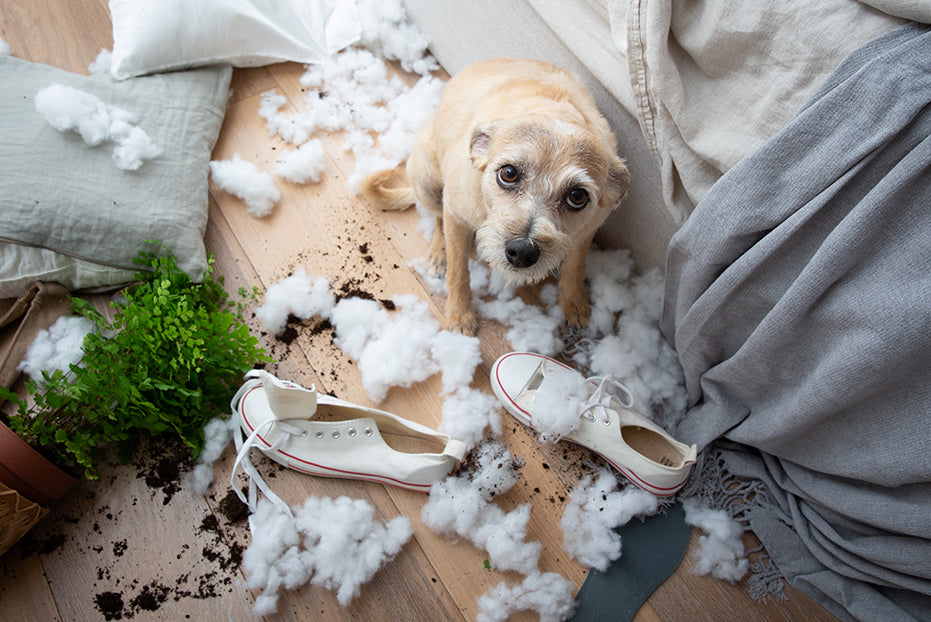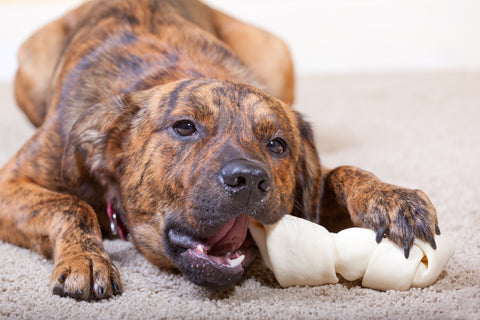
Tips for Reducing Separation Anxiety When Returning to the Office
If you didn’t already know, dogs are very social animals, especially compared to cats!
From interacting with people, to spending time with other dogs, your pup NEEDS daily opportunities to socialize and play. In fact, having too much alone time might make your dog feel lonely or distressed, causing what is known as separation anxiety.
As you begin your return to office or even just embracing normal life again, you may find yourself wondering what you can do to help your dog with separation anxiety. Well the good news is, you are not alone. Experts are predicting a rise in diagnosed separation anxiety due to the high number of pet adoptions that took place in 2020 during the height of the COVID-19 global pandemic. Keep in mind that what is needed can vary; all dogs are one of a kind - so your dog’s past experiences, age and personality can affect their needs as you return to your post quarantine world.
Tips for Making Returning to the Office Easier for Your Dog
1. Bring in Additional Support

To kick off our list of tips for reducing separation anxiety when returning to the office we had to shout out a fan favorite, ThunderEase for Dogs Calming Diffuser! ThunderEase for Dogs is the #1 vet recommended solution for reducing anxiety. ThunderEase mimics the calming pheromone that a mother dog emits while nursing her puppies, which helps your dog to feel calmer and more comfortable in all situations!
ThunderEase uses the Adaptil formula, which is the #1 Vet Recommended Solution to help dogs adjust to challenging situations and curb unwanted stress related behaviors.
For separation anxiety specifically, we would recommend using either the ThunderEase diffuser or calming collar as these solutions are best for aiding in continuous stress inducing situations.
2. Start Early and With a Gradual Approach

If you, like many families, adopted a pandemic pup in 2020, you will need to start early if you want to maximize the reduction of stress-related incidents upon your return to work. The best way to do this is to start small. Minimize the duration of time leaving your dog alone at first. Once your pet begins to feel more comfortable with the time, continue to increase the amount of time you leave your dog at home alone.
3. Leave Your Dog Treats and Rewards

Most dogs are motivated by food which is great when working to desensitize your dog to being home alone. If you leave treats and rewards around the house for your pooch while you are away, they will eventually begin to associate you leaving them alone with their favorite chew toy or treat. This will create some positive reinforcement and cut down on the amount of uneasiness your dog feels when you are away.
4. Crate Training & Limiting Their Playing Field

Although crate training your dog is recommended, leaving your pup confined to their crate for extended periods is not good for their well-being (and may cause them stress) so they should only be confined to their crate for two hours at the most. However, you might want to leave your dog in a large room or separate area without giving them full reign of the house instead - especially if there are parts of the house that aren’t so dog-friendly. Giving your dog a particular space to stay in is also a useful technique when working up to alone time during training. You’ll know that you can leave them safely in there with treats, puzzles and toys so that they get used to not having interaction with you.
5. Keep Calm and Carry On
A mistake that many pet owners make when working to reduce the signs of separation anxiety in dogs is that they make a big deal of returning home. They give their dog extra attention and spend more time with them than they normally would.. This common mistake is actually something that may increase anxiety in your dog. Instead of preoccupying themselves in your absence, they might spend all day waiting for you to get home so that they can have that extreme interaction and extra attention. Rather than making a fuss of your dog when you walk in the door, try to slightly ignore your dog for the first few minutes by using a very gentle and calm greeting. However, don’t ignore a very distressed dog, this could make matters worse.
6. Lessen their Alone Time

Our sixth and final tip for reducing separation anxiety signs in your dog is more about prevention. If you can help limit your dog’s time home alone, you may prevent symptoms of separation anxiety; Consider options like doggy daycare, a dog walker or sitter, and working from home when possible. Simply having someone familiar on call to let your dog out for a toilet break and a quick run around can help!
Dogs are the perfect companions - that’s why we call them our best friends! So try to be a good friend to them and don’t leave them alone for too long. If you need to leave them alone then consider our ThunderEase for Dogs Calming Diffuser which is a simple yet clinically proven solution that can help calm and relax your dog at home by providing constant calming. It supports your dog in situations like loud noises, staying alone, visitors, and other occasions that may make them nervous. Plug the Diffuser in the room where your dog spends most of their time to help reassure them during their alone time.
 Skip to content
Skip to content
